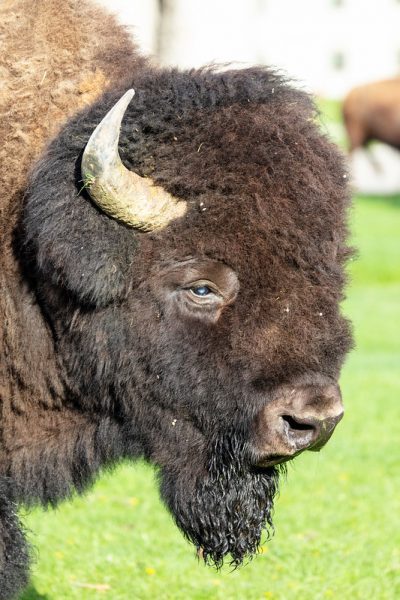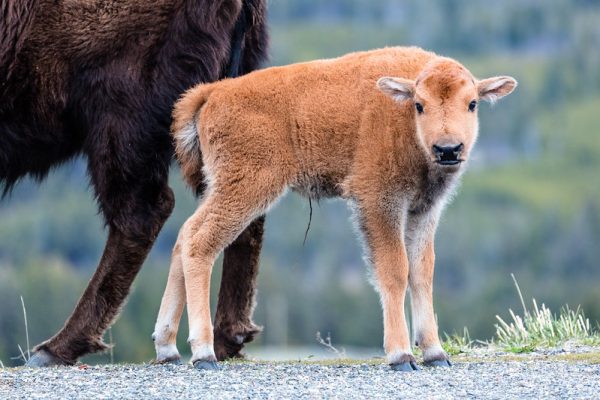
The Yellowstone bison story covers more than one hundred years of struggle and conflict surrounding one of America’s most majestic animals. In the early 1800’s, an estimated 65
million bison roamed throughout the continent of North America. However, market hunting and poaching had a devastating effect on the bison population; and by 1890, fewer than 1,000 remained! Even with the establishment of Yellowstone National Park, protection and sanctuary for the bison did not occur until the U.S. Army arrived in 1886 to protect the park’s resources.
Due to protection and manipulative management (transplanting bison to different parts of Yellowstone), there were approximately 1,500 bison in Yellowstone National Park by 1954. Beginning 1968, the manipulative management of Yellowstone bison was discontinued and the population was allowed to fluctuate based on environmental conditions (i.e. winter weather, food availability, etc). In the 1970’s and 1980’s, there were a series of cool, wet summers followed by mild winters. These conditions allowed for an abundance of grasses for the bison to feed on and a reduction in the winter mortality rate.

In addition, snowmobiling in the park has helped more bison survive winters since the groomed roads cut down on the amount of energy that a bison uses to travel when compared to traveling through deep snow. 4,680 counted in summer 2020. This includes two primary breeding herds: northern (3,437) and central (1,243).
The bison (often referred to as buffalo) is truly a majestic animal. An adult bull bison may be six feet tall at the shoulder and weigh 2,000 pounds. Females look like the males except that they are smaller and have more slender horns. Bison mate from July through early August, and the calves are born in April and May. During the spring and early summer, new-born calves can often be viewed in the Firehole area and Lamar Valley.

Although viewing the young calves can be an exciting experience, it is very important that you do not get too close to the animals for observation or photographs. Bison may appear big and slow, but they can run up to 30 miles per hour. Yellowstone visitors are gored every year, because they venture too near in attempts to photograph the animals.
Where to find them

Bison are almost always on the move and are seen in different areas during different seasons. Probably the best spot is in Hayden Valley along the Yellowstone River. Some other spots are along the Madison, Firehole and Gibbon Rivers. Look for bison in the Fountain Flats area and the Mud Volcano area, also in Lamar Valley. Lone Bulls are often seen around the Lake Hotel and Fishing Bridge.
